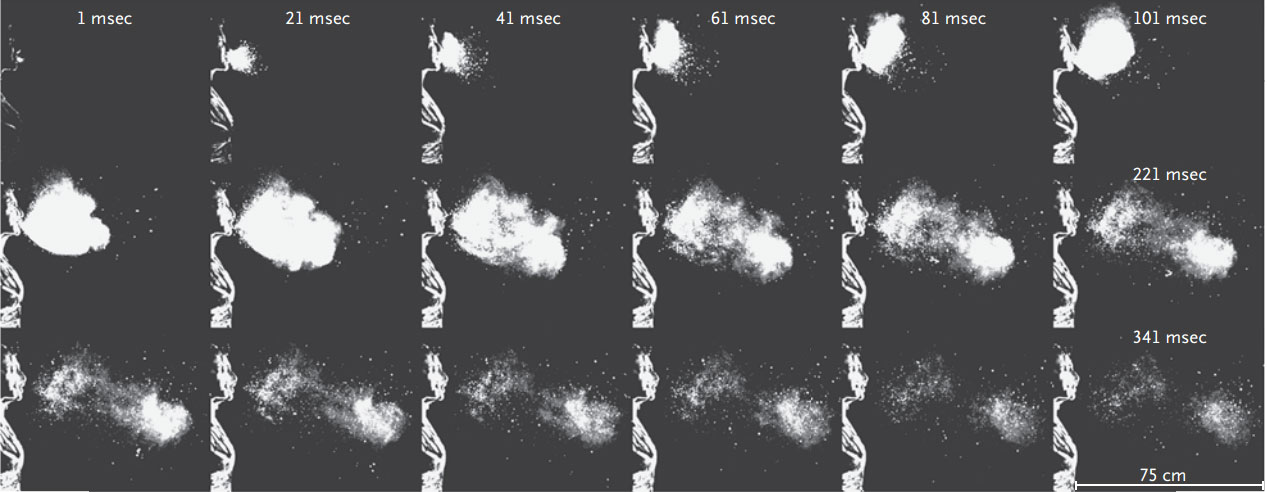Gross! High-Speed Images Show What Happens When You Sneeze

High-speed images of a human sneeze show exactly why it's a good idea to stand back before you say gesundheit — ejected droplets from a sneeze can travel more than 25 feet, researchers have found.
Using a black-and white camera that recorded 1,000 frames per second, researchers at the Massachusetts Institute of Technology were able to capture images of the cloud of droplets people produce when they sneeze.
The images reveal what happens every 20 milliseconds after someone sneezes. A sneeze produces a "turbulent cloud" of hot, moist air and drops of saliva, the researchers said.

The actual ejection of a sneeze can last up to 150 milliseconds (0.15 seconds). After that, the stuff that was sneezed out "transitions into a freely evolving turbulent puff cloud," the researchers wrote in the Aug. 25 issue of the New England Journal of Medicine. [Ah-CHOO! 7 Tickling Facts About Sneezing]
The largest droplets in the cloud settle about 3 to 6.5 feet (1 to 2 meters) away, but the smaller droplets remain suspended in the cloud, and can travel up to 20 to 26 feet (6 to 8 m) away, the researchers found.
Previously, this same group of researchers showed that sneeze droplets travel suspended in a gas cloud, which allows them to go farther distances than they would if they didn't travel in such a cloud.
Original article on Live Science.
Sign up for the Live Science daily newsletter now
Get the world’s most fascinating discoveries delivered straight to your inbox.

Rachael is a Live Science contributor, and was a former channel editor and senior writer for Live Science between 2010 and 2022. She has a master's degree in journalism from New York University's Science, Health and Environmental Reporting Program. She also holds a B.S. in molecular biology and an M.S. in biology from the University of California, San Diego. Her work has appeared in Scienceline, The Washington Post and Scientific American.











